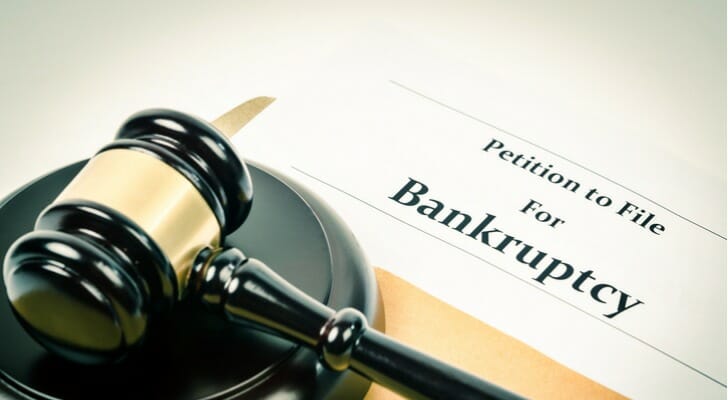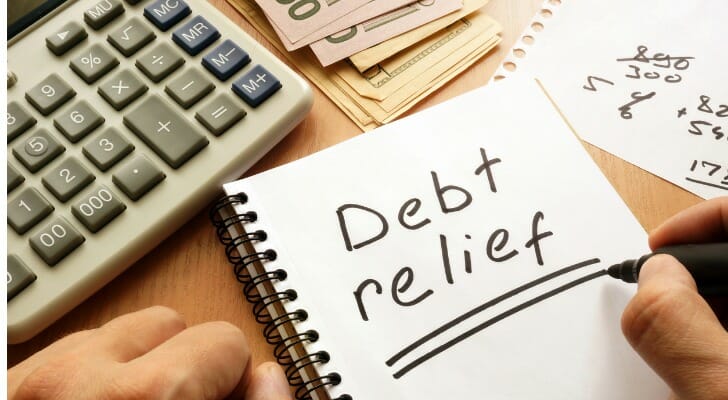If you’re trapped under a pile of debt, bankruptcy may be your last resort. Chapter 7 bankruptcy is the most common form. It can wipe out your debt and give you a fresh start. This article will explain how to file for chapter 7 bankruptcy and everything you need to know to go through the process. A financial advisor can also help you stay on track during and after the proceedings.
What Is Chapter 7 Bankruptcy?
Chapter 7 bankruptcy is also called “straight liquidation.” In a nutshell, a court-approved trustee examines all your debt, property and assets. The trustee then liquidates or sells your property, not protected by law, to pay back your creditors. If your debt ends up exceeding your assets, the court forgives it.
However, state law determines “exempt property.” This is property you get to keep. It can’t be liquidated by the trustee. In most states, exempt property law protects the following:
- Retirement plan assets including 401(k) plans and individual retirement accounts (IRAs)
- Social Security payments you’ve yet to spend
- Your vehicle
- Anything required to perform your trade
- Some equity in your home
- Clothing and furniture
But while the court may forgive some of your remaining debt at the end of a Chapter 7 bankruptcy proceeding, there are some payments the court can’t discharge. So no matter what, you’re on the hook for the following:
- Student loan debt
- Child support
- Alimony
- Back taxes
- Debt you’ve incurred via illegal means
So what can you expect from Chapter 7 bankruptcy proceedings? The process usually takes four to six months. But debtors are usually required to make just one trip to the courthouse. The proceedings usually rack up around $335 in administrative fees. And if you’re curious, it’s named after the section where it’s located in the federal Bankruptcy Code.
Who Can File for Chapter 7 Bankruptcy?
You can’t file for Chapter 7 bankruptcy if your debt has been discharged through one in the last six to eight years, depending on which type of bankruptcy proceeding you completed.
To be eligible to file for Chapter 7 bankruptcy, you must pass what the court calls a means test. The means test compares your income to the median income in your state. The test determines whether you are capable of paying off a reasonable portion of your debt.
The means test is one of the many documents you need to produce before filing for Chapter 7 bankruptcy.
How Do You File for Chapter 7 Bankruptcy?
Before you file for Chapter 7 bankruptcy, you must complete a credit-counseling course run by an agency approved by the U.S. Department of Justice. You can complete it in person, by phone or online. Completing this course would also give you an idea of other options you may have before turning to Chapter 7 bankruptcy.
Before you kick off the Chapter 7 bankruptcy process, you must file a petition and a number of other forms with the local bankruptcy court. These documents require you to report the following:
- Current property and that which you’ve owned in the last two years
- Current income
- Living expenses
- Debt and creditors
- Exempt property as described above (Check with a lawyer to determine exactly what this means in your state)
- Financial transactions within the last two years
You can find most of these forms online.
The Chapter 7 Bankruptcy Process

If the court approves your paperwork, it initiates an automatic stay. During this time, your creditors can’t legally collect the debt you owe them. In essence, you have a brief time period in which the court protects your assets and property from being seized by creditors. There may be an exemption with secured debt, however. This is the kind of debt for which you’ve agreed to place property such as a car as collateral. If you haven’t been making regular payments, the creditor may request the court to lift the automatic stay.
In addition, the court appoints a trustee or a team of trustees to oversee your debt and assets. During this time, you can’t sell or donate the property you listed in the filing documents without approval from the court. You also can’t pay off pre-filling debt. With some exceptions, however, you may sell property you acquire after filing.
The trustee will also set a creditors meeting and send a notice to all of the ones you listed. It usually takes place 30 days after you file. During this part of the proceedings, the trustee may ask you questions about your debts and paperwork. You must answer these questions under oath. But while this part of the process may sound intimidating, it typically only involves a few creditors. These include car creditors and members of the IRS to determine how you’re going to pay back non-dischargeable back taxes, if any. In most cases, the creditors meeting marks the only time you would visit the court house.
About 60 days following the meeting, you must take a budget counseling course and receive a certificate of completion. You can complete this online or by phone.
Following this course, you remain in a holding position of sorts. The trustee examines your assets, liquidates non-exempt property and discharges what can be forgiven. Until the court sends you a notice detailing approved discharges, however, you can’t run a business with inventory. At this point, you still can’t sell or donate any property without the court’s consent.
What Do I Do After Chapter 7 Bankruptcy?
Chapter 7 bankruptcy remains on your credit report for 10 years, so it will affect your credit score. But with some or all of your debt wiped out, you have a fresh start.
Bottom Line

Bankruptcy should be your last resort, but it’s an option nonetheless. Chapter 7 is the most common. You have to gather some basic documentation expressing your income, assets and debt. Then, you petition the local bankruptcy court. After that, a trustee runs the process, liquidates your non-exempt assets and discharges the debt that can be forgiven. The idea behind bankruptcy is that even those buried in debt can be given a second chance, learn from their mistakes and become contributing members of society. So take that opportunity to take control of your financial future.
Tips on Managing Debt
- A lot of people file for bankruptcy because they didn’t have guardrails in place before. To help you stay debt-free, we created a guide on how to grow an emergency fund.
- After Chapter 7 bankruptcy, you will have to recover what you lost. but you will do so debt-free. To stay free of debt, you can work with a personal financial advisor. SmartAsset’s free tool matches you with up to three vetted financial advisors who serve your area, and you can interview your advisor matches at no cost to decide which one is right for you. If you’re ready to find an advisor who can help you achieve your financial goals, get started now.
Photo credit: ©iStock.com/designer491, ©iStock.com/Gam1983, ©iStock.com/Hispanolistic
